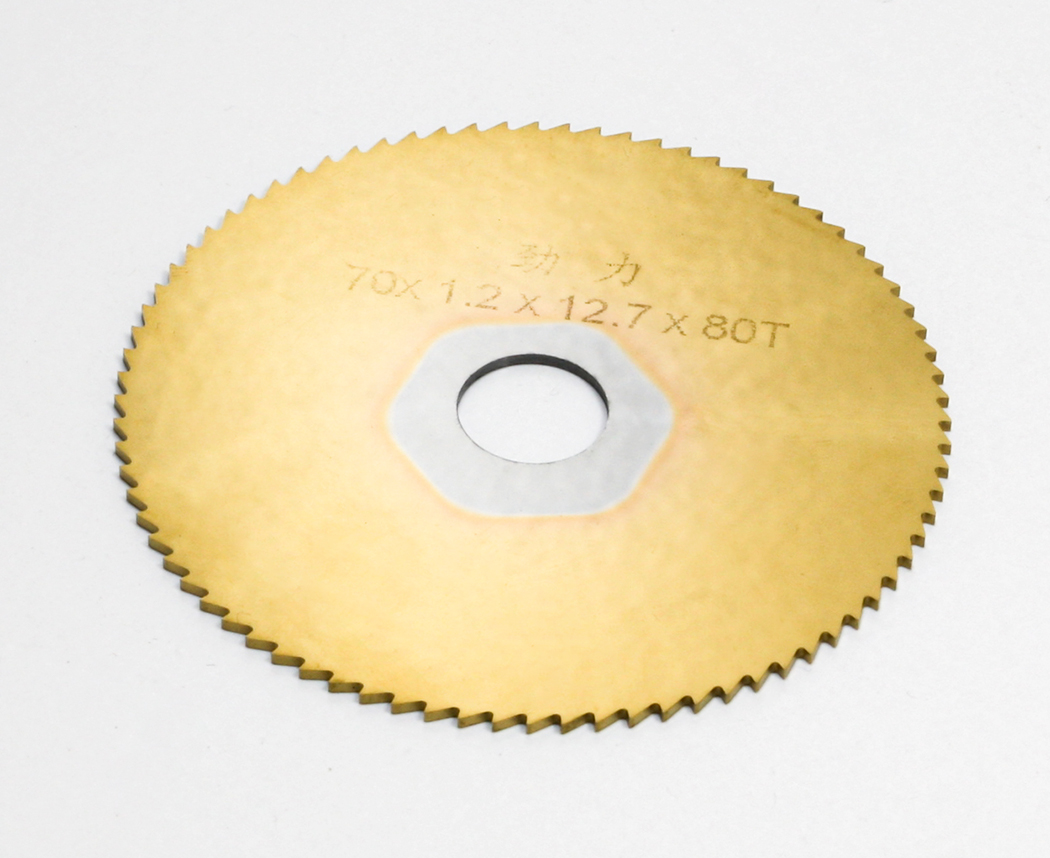News Center
Recommending Products
Contact: Mr. Jin
Tel: 13901575780
0512-52428686
Contact: Mr. Zha
Tel: 13913639797
0512-52422071
Address: No. 59, Huyi Road, Liantang, Shanghu Town, Changshu City, Jiangsu Province.
What are the advantages of coated saw blade milling cutters
Coated saw blade milling cutters have many advantages, and the following is a detailed introduction:Sources:m.oakdirectuk.com | PublishDate:2024.11.27
1. In terms of tool life
Improved wear resistance: The coating is like putting a hard "armor" on the saw blade milling cutter, significantly enhancing the wear resistance of the tool. For example, the common titanium nitride (TiN) coating has a hardness of about 2200 HV, greatly reducing the friction and wear between the tool and the workpiece during the cutting process, making the tool more durable and effectively extending its service life
Enhanced resistance to crescent wear: During cutting, the part of the tool front face near the cutting edge is prone to crescent wear. And coatings can serve as chemical and thermal barriers, effectively reducing diffusion and chemical reactions between tools and workpieces, thereby reducing crescent wear, maintaining the sharpness of cutting edges, and further extending the service life of tools.
2. In terms of cutting performance
Reduced cutting force: Coatings have a lower coefficient of friction, such as SPA coatings, which can reduce the friction between the tool and the workpiece during cutting, thereby reducing cutting force. This not only makes the cutting process more agile and smooth, reducing tool vibration and deformation, but also reduces cutting energy consumption and improves machining efficiency
Improved cutting speed: Due to the good wear resistance and lubrication of coated tools, they can withstand higher cutting temperatures and forces. Therefore, under the same machining conditions, higher cutting speeds can be used than uncoated tools, significantly improving machining efficiency. Generally speaking, coated tools can increase cutting speed by 20% to 70% compared to uncoated tools.
3. In terms of processing quality
Improved machining accuracy: Coated cutting tools can maintain good cutting edge sharpness and shape stability during the cutting process, thereby reducing the impact of tool wear and deformation on machining accuracy, and can improve machining accuracy by 0.5-1 levels. For example, when milling precision parts, coated saw blade milling cutters can better control dimensional accuracy and surface roughness, meeting the requirements of high-precision machining.
Better surface quality: The smooth surface of the coating can make it easier for chips to be discharged, reducing the scratching and squeezing of the processed surface by chips, thereby achieving better surface quality. In addition, some coatings also have anti-oxidation and anti-corrosion properties, which can prevent the tool from producing chip lumps and corrosion during the machining process, further improving the surface quality of the machining.
4. In terms of universality
Widely applicable materials: Different coating materials have different characteristics, so coated saw blade milling cutters can adapt to the processing of various materials by selecting the appropriate coating. For example, titanium nitride coating is suitable for cutting softer workpieces such as copper and low-carbon steel; TiCN coating is recommended for cutting materials with tensile strength exceeding 800N/mm 2 and stainless steel; Super coating (CrN) is particularly resistant to adhesion, corrosion, and oxidation, suitable for cutting non-ferrous metals such as copper and titanium
Satisfy different processing conditions: Coated saw blade milling cutters can also be customized according to different processing conditions. For example, under harsh processing conditions such as high cutting speed and high feed rate, coatings with higher hardness and heat resistance, such as Super A coating (TiAlN), can be selected to ensure the performance and service life of the tool
5. Environmental protection and cost aspects
Reduce tool consumption: Due to the long service life of coated tools, the frequency of tool replacement is reduced, thereby reducing tool consumption and saving resources. At the same time, it also reduces downtime caused by tool replacement and improves production efficiency.
Reduce the use of cutting fluid: Coated cutting tools have good lubricity and can reduce cutting force and cutting heat during the cutting process. Therefore, in some cases, it can reduce dependence on cutting fluid and even achieve dry cutting. This is not only beneficial for environmental protection, reducing the discharge and treatment costs of cutting fluid, but also improves the working environment and reduces the labor intensity of workers.






